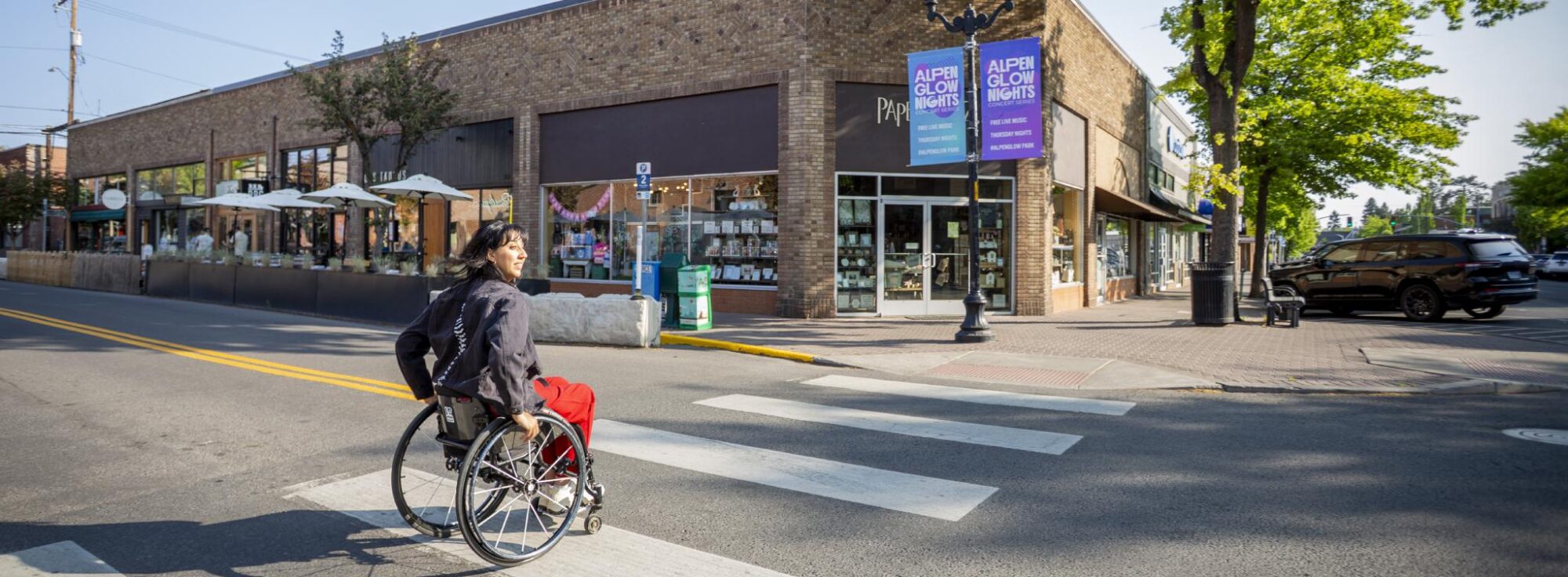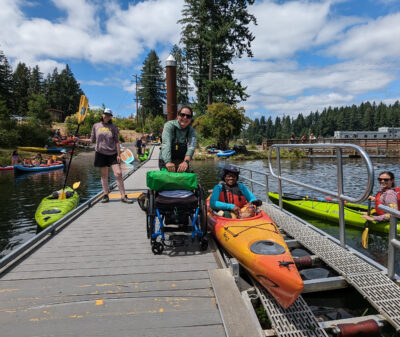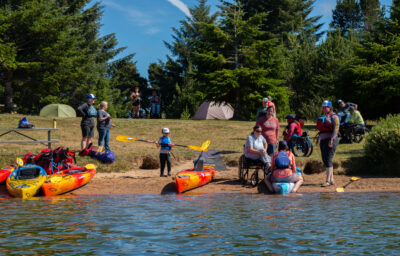
Accessible Travel
A comprehensive approach that empowers people of all abilities, including those with mobility, vision, hearing, and cognitive disabilities, to independently and comfortably participate in tourism and leisure activities with dignity and equality.
Accessibility is good for everyone (residents, too)
You can think of investing in accessibility today as a down payment for addressing the needs of aging population (all of us included) while creating lasting infrastructure that benefits residents, 17% of whom have disabilities. Ultimately, these features will be used ten times more by the community, reinforcing accessibility as a win-win—both a necessity and a smart business investment.
Empowering tourism providers to invest in accessibility not only creates economic opportunities but it enables individuals with disabilities to travel in a way that respects their individual needs. We know from many peoples lived experiences, that legal compliance when it comes to accessibility isn’t enough to achieve a genuinely welcoming and a positive experience. When implemented correctly, everyone benefits from accessible tourism. Implementing accessibility not only breaks down barriers for people with disabilities to participate but also creates shared benefits among many different types of travelers, such as aging adults, people traveling with temporary disabilities, and people traveling with children. When universal design features are applied, they benefit society as a whole by improving usability for everyone.
A Smart Investment
Accessibility is a strategic business investment for the tourism industry. Globally, an estimated 1.3 billion people—or 1 in 6 globally—experience significant visible disabilities, representing 16 percent of the world’s population. When family members and caregivers are considered, the number of people who are directly or indirectly affected by disability rises to 2 billion or 30 percent of the global population. When invisible disabilities are included, the number climbs to nearly 60% of people worldwide. That’s a massive, and often, overlooked market. Travelers with disabilities spend $120 billion globally. In the U.S. alone, disabled travelers and their companions spend over $50 billion annually, with a total economic impact exceeding $100 billion.
But traveling with a disability can be daunting. Those numbers could easily be double or triple that if those visitors felt confident and comfortable knowing what to expect and that they’d be welcomed and comfortable.
Industry Investments
Ensuring Oregon is a welcoming destination for all is woven into everything we do at Travel Oregon.
It’s critical to invest in accessible tourism initiatives that remove barriers for people with disabilities. Barriers are anything that prevents people with visible and non-visible disabilities from fully participating in public life. Some examples include:
- Physical, such as stairs without ramps
- Sensory, such as unreadable signage
- Attitudinal, such as assumptions or a lack of awareness of specific disabilities
Travel Oregon also supports projects and programs that further inclusion and accessibility across the state through a series of grants and other investments. See additional resources below for more information.

Wheel the World Program
Travel Oregon has partnered with Wheel the World to make Oregon the first state to achieve "Accessibility Verified" designation. The designation elevates transparency and promotes inclusive travel experiences for people with both visible and non-visible disabilities.
Learn more and access the toolkitLearn more about what regions are doing to support accessible travel opportunities:



